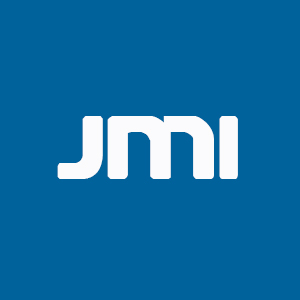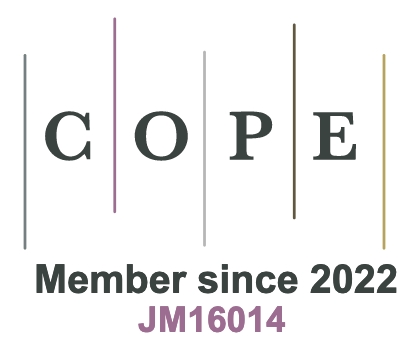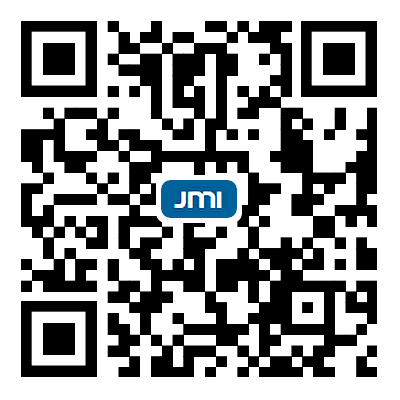REFERENCES
1. Zhang, L.; Mei, L.; Wang, K.; et al. Advances in the application of perovskite materials. Nanomicro. Lett. 2023, 15, 177.
2. Liu, J.; Zhang, S.; Wang, W.; Zhang, H. Photoelectrocatalytic principles for meaningfully studying photocatalyst properties and photocatalysis processes: from fundamental theory to environmental applications. J. Energy. Chem. 2023, 86, 84-117.
3. Tan, S.; Huang, T.; Yavuz, I.; et al. Stability-limiting heterointerfaces of perovskite photovoltaics. Nature 2022, 605, 268-73.
4. Lu, T.; Li, M.; Lu, W.; Zhang, T. Recent progress in the data-driven discovery of novel photovoltaic materials. J. Mater. Inf. 2022, 2, 7.
5. Wen, J.; Rong, K.; Jiang, L.; et al. Copper-based perovskites and perovskite-like halides: a review from the perspective of molecular level. Nano. Energy. 2024, 128, 109802.
6. Aydin, E.; Ugur, E.; Yildirim, B. K.; et al. Enhanced optoelectronic coupling for perovskite/silicon tandem solar cells. Nature 2023, 623, 732-8.
7. Isikgor, F. H.; Zhumagali, S.; Merino, L. V. T.; De Bastiani, M.; Mcculloch, I.; De Wolf, S. Molecular engineering of contact interfaces for high-performance perovskite solar cells. Nat. Rev. Mater. 2023, 8, 89-108.
10. Han, T.; Jang, K. Y.; Dong, Y.; Friend, R. H.; Sargent, E. H.; Lee, T. A roadmap for the commercialization of perovskite light emitters. Nat. Rev. Mater. 2022, 7, 757-77.
11. Xiong, R.; Zhang, L.; Wen, C.; Anpo, M.; Ang, Y. S.; Sa, B. Ferroelectric switching driven photocatalytic overall water splitting in the As/In2Se3 heterostructure. J. Mater. Chem. A. 2025, 13, 4563-75.
12. Chen, Z.; Yao, D.; Chu, C.; Mao, S. Photocatalytic H2O2 production systems: design strategies and environmental applications. Chem. Eng. J. 2023, 451, 138489.
13. Zhou, P.; Navid, I. A.; Ma, Y.; et al. Solar-to-hydrogen efficiency of more than 9% in photocatalytic water splitting. Nature 2023, 613, 66-70.
14. Fan, Y.; Huang, W.; Zhu, F.; et al. Dispersion-assisted high-dimensional photodetector. Nature 2024, 630, 77-83.
15. Li, Z.; Yan, T.; Fang, X. Low-dimensional wide-bandgap semiconductors for UV photodetectors. Nat. Rev. Mater. 2023, 8, 587-603.
16. Wang, H.; Li, Z.; Li, D.; et al. Van der Waals integration based on two-dimensional materials for high-performance infrared photodetectors. Adv. Funct. Mater. 2021, 31, 2103106.
17. Saliba, M.; Matsui, T.; Seo, J. Y.; et al. Cesium-containing triple cation perovskite solar cells: improved stability, reproducibility and high efficiency. Energy. Environ. Sci. 2016, 9, 1989-97.
18. Zhang, Y.; Chen, Y.; Liu, G.; et al. Nonalloyed α-phase formamidinium lead triiodide solar cells through iodine intercalation. Science 2025, 387, 284-90.
19. Tan, T.; Jiang, X.; Wang, C.; Yao, B.; Zhang, H. 2D material optoelectronics for information functional device applications: status and challenges. Adv. Sci. 2020, 7, 2000058.
20. Dastgeer, G.; Afzal, A. M.; Nazir, G.; Sarwar, N. p-GeSe/n-ReS2 heterojunction rectifier exhibiting a fast photoresponse with ultra-high frequency-switching applications. Adv. Mater. Inter. 2021, 8, 2100705.
21. Liu, Z.; Na, G.; Tian, F.; Yu, L.; Li, J.; Zhang, L. Computational functionality-driven design of semiconductors for optoelectronic applications. InfoMat 2020, 2, 879-904.
22. Khan, D.; Qu, G.; Muhammad, I.; Tang, Z.; Xu, Z. Overcoming two key challenges in monolithic perovskite-silicon tandem solar cell development: wide bandgap and textured substrate - a comprehensive review. Adv. Energy. Mater. 2023, 13, 2302124.
23. Zhang, C. Z.; Fu, X. Q. Applications and potentials of machine learning in optoelectronic materials research: an overview and perspectives. Chinese. Phys. B. 2023, 32, 126103.
24. Hu, Y.; Chen, J.; Wei, Z.; He, Q.; Zhao, Y. Recent advances and applications of machine learning in electrocatalysis. J. Mater. Inf. 2023, 3, 18.
25. Yuan, J.; Li, Z.; Yang, Y.; et al. Applications of machine learning method in high-performance materials design: a review. J. Mater. Inf. 2024, 4, 14.
26. Liu, Y.; Zhao, T.; Ju, W.; Shi, S. Materials discovery and design using machine learning. J. Materiomics. 2017, 3, 159-77.
27. Yang, X.; Zhou, K.; He, X.; Zhang, L. Methods and applications of machine learning in computational design of optoelectronic semiconductors. Sci. China. Mater. 2024, 67, 1042-81.
28. Himanen, L.; Geurts, A.; Foster, A. S.; Rinke, P. Data-driven materials science: status, challenges, and perspectives. Adv. Sci. 2019, 6, 1900808.
29. Brunton, S. L.; Kutz, J. N. Data-driven science and engineering: machine learning, dynamical systems, and control. Cambridge University Press: 2019.
30. Chen, Z.; Yang, Y. Data-driven design of eutectic high entropy alloys. J. Mater. Inf. 2023, 3, 10.
31. Chen, M.; Yin, Z.; Shan, Z.; et al. Application of machine learning in perovskite materials and devices: a review. J. Energy. Chem. 2024, 94, 254-72.
32. He, H.; Wang, Y.; Qi, Y.; Xu, Z.; Li, Y.; Wang, Y. From prediction to design: recent advances in machine learning for the study of 2D materials. Nano. Energy. 2023, 118, 108965.
33. Chen, J.; Feng, M.; Zha, C.; Shao, C.; Zhang, L.; Wang, L. Machine learning-driven design of promising perovskites for photovoltaic applications: a review. Surf. Interfaces. 2022, 35, 102470.
34. Nematov, D.; Hojamberdiev, M. Machine learning - driven materials discovery: unlocking next-generation functional materials - a minireview. arXiv 2025, arXiv:2503.18975. https://doi.org/10.48550/arXiv.2503.18975. (accessed 27 May 2025).
35. Li, Y.; Yang, K. High-throughput computational design of halide perovskites and beyond for optoelectronics. WIREs. Comput. Mol. Sci. 2021, 11, e1500.
36. Shen, L.; Zhou, J.; Yang, T.; Yang, M.; Feng, Y. P. High-throughput computational discovery and intelligent design of two-dimensional functional materials for various applications. Acc. Mater. Res. 2022, 3, 572-83.
37. Xu, D.; Zhang, Q.; Huo, X.; Wang, Y.; Yang, M. Advances in data-assisted high-throughput computations for material design. MGE. Adv. 2023, 1, e11.
38. Gan, Y.; Miao, N.; Lan, P.; Zhou, J.; Elliott, S. R.; Sun, Z. Robust design of high-performance optoelectronic chalcogenide crystals from high-throughput computation. J. Am. Chem. Soc. 2022, 144, 5878-86.
39. Lan, P.; Miao, N.; Gan, Y.; et al. High-throughput computational design of 2D ternary chalcogenides for sustainable energy. J. Phys. Chem. Lett. 2023, 14, 10489-98.
40. Bai, S.; Zhang, X.; Zhao, L. D. Rethinking SnSe thermoelectrics from computational materials science. Acc. Chem. Res. 2023, 56, 3065-75.
41. Deng, T.; Qiu, P.; Yin, T.; et al. High-throughput strategies in the discovery of thermoelectric materials. Adv. Mater. 2024, 36, e2311278.
42. Xu, Y.; Elcoro, L.; Song, Z. D.; et al. High-throughput calculations of magnetic topological materials. Nature 2020, 586, 702-7.
43. Cao, G.; Ouyang, R.; Ghiringhelli, L. M.; et al. Artificial intelligence for high-throughput discovery of topological insulators: the example of alloyed tetradymites. Phys. Rev. Mater. 2020, 4, 034204.
44. Zhang, X.; Meng, W.; Liu, Y.; Dai, X.; Liu, G.; Kou, L. Magnetic electrides: high-throughput material screening, intriguing properties, and applications. J. Am. Chem. Soc. 2023, 145, 5523-35.
45. Miao, N.; Sun, Z. Computational design of two-dimensional magnetic materials. WIREs. Comput. Mol. Sci. 2022, 12, e1545.
46. de Pablo, J. J.; Jackson, N. E.; Webb, M. A.; et al. New frontiers for the materials genome initiative. npj. Comput. Mater. 2019, 5, 173.
47. de Pablo, J. J.; Jones, B.; Kovacs, C. L.; Ozolins, V.; Ramirez, A. P. The Materials Genome Initiative, the interplay of experiment, theory and computation. Curr. Opin. Solid. State. Mater. Sci. 2014, 18, 99-117.
48. Yu, Q.; Ma, N.; Leung, C.; Liu, H.; Ren, Y.; Wei, Z. AI in single-atom catalysts: a review of design and applications. J. Mater. Inf. 2025, 5, 9.
49. Jordan, M. I.; Mitchell, T. M. Machine learning: trends, perspectives, and prospects. Science 2015, 349, 255-60.
50. Xu, P.; Ji, X.; Li, M.; Lu, W. Small data machine learning in materials science. npj. Comput. Mater. 2023, 9, 1000.
51. Butler, K. T.; Davies, D. W.; Cartwright, H.; Isayev, O.; Walsh, A. Machine learning for molecular and materials science. Nature 2018, 559, 547-55.
52. Schleder, G. R.; Padilha, A. C. M.; Acosta, C. M.; Costa, M.; Fazzio, A. From DFT to machine learning: recent approaches to materials science - a review. J. Phys. Mater. 2019, 2, 032001.
53. Jacobsson, T. J.; Hultqvist, A.; García-Fernández, A.; et al. An open-access database and analysis tool for perovskite solar cells based on the FAIR data principles. Nat. Energy. 2022, 7, 107-15.
54. Mannodi-Kanakkithodi, A.; Chan, M. K. Y. Data-driven design of novel halide perovskite alloys. Energy. Environ. Sci. 2022, 15, 1930-49.
55. Ma, B.; Wu, X.; Zhao, C.; et al. An interpretable machine learning strategy for pursuing high piezoelectric coefficients in (K0.5Na0.5)NbO3-based ceramics. npj. Comput. Mater. 2023, 9, 1187.
56. Cheng, G.; Gong, X. G.; Yin, W. J. Crystal structure prediction by combining graph network and optimization algorithm. Nat. Commun. 2022, 13, 1492.
57. Chen, C.; Zuo, Y.; Ye, W.; Li, X.; Deng, Z.; Ong, S. P. A critical review of machine learning of energy materials. Adv. Energy. Mater. 2020, 10, 1903242.
58. Groom, C. R.; Bruno, I. J.; Lightfoot, M. P.; Ward, S. C. The Cambridge Structural Database. Acta. Crystallogr. B. Struct. Sci. Cryst. Eng. Mater. 2016, 72, 171-9.
59. Bergerhoff, G.; Hundt, R.; Sievers, R.; Brown, I. D. The inorganic crystal structure data base. J. Chem. Inf. Comput. Sci. 1983, 23, 66-9.
60. Gražulis, S.; Daškevič, A.; Merkys, A.; et al. Crystallography Open Database (COD): an open-access collection of crystal structures and platform for world-wide collaboration. Nucleic. Acids. Res. 2012, 40, D420-7.
61. Curtarolo, S.; Setyawan, W.; Wang, S.; et al. AFLOWLIB.ORG: a distributed materials properties repository from high-throughput ab initio calculations. Comput. Mater. Sci. 2012, 58, 227-35.
62. Jain, A.; Ong, S. P.; Hautier, G.; et al. Commentary: The Materials Project: a materials genome approach to accelerating materials innovation. APL. Mater. 2013, 1, 011002.
63. Gjerding, M. N.; Taghizadeh, A.; Rasmussen, A.; et al. Recent progress of the Computational 2D Materials Database (C2DB). 2D. Mater. 2021, 8, 044002.
64. Kirklin, S.; Saal, J. E.; Meredig, B.; et al. The Open Quantum Materials Database (OQMD): assessing the accuracy of DFT formation energies. npj. Comput. Mater. 2015, 1, BFnpjcompumats201510.
65. Damewood, J.; Karaguesian, J.; Lunger, J. R.; et al. Representations of materials for machine learning. Annu. Rev. Mater. Res. 2023, 53, 399-426.
66. Li, S.; Liu, Y.; Chen, D.; Jiang, Y.; Nie, Z.; Pan, F. Encoding the atomic structure for machine learning in materials science. WIREs. Comput. Mol. Sci. 2022, 12, e1558.
67. Oh, S. H. V.; Hwang, W.; Kim, K.; Lee, J. H.; Soon, A. Using feature-assisted machine learning algorithms to boost polarity in lead-free multicomponent niobate alloys for high-performance ferroelectrics. Adv. Sci. 2022, 9, e2104569.
68. Schmidt, J.; Marques, M. R. G.; Botti, S.; Marques, M. A. L. Recent advances and applications of machine learning in solid-state materials science. npj. Comput. Mater. 2019, 5, 221.
69. Li, J.; Cheng, K.; Wang, S.; et al. Feature selection: a data perspective. ACM. Comput. Surv. 2018, 50, 1-45.
70. Hsu, H.; Hsieh, C.; Lu, M. Hybrid feature selection by combining filters and wrappers. Expert. Syst. Appl. 2011, 38, 8144-50.
71. Rodriguez-Galiano, V. F.; Luque-Espinar, J. A.; Chica-Olmo, M.; Mendes, M. P. Feature selection approaches for predictive modelling of groundwater nitrate pollution: an evaluation of filters, embedded and wrapper methods. Sci. Total. Environ. 2018, 624, 661-72.
72. Liu, H.; Zhou, M.; Liu, Q. An embedded feature selection method for imbalanced data classification. IEEE/CAA. J. Autom. Sinica. 2019, 6, 703-15.
73. Zhang, Z.; Liu, S.; Xiong, Q.; Liu, Y. Strategic integration of machine learning in the design of excellent hybrid perovskite solar cells. J. Phys. Chem. Lett. 2025, 16, 738-46.
74. Gladkikh, V.; Kim, D. Y.; Hajibabaei, A.; Jana, A.; Myung, C. W.; Kim, K. S. Machine learning for predicting the band gaps of ABX3 perovskites from elemental properties. J. Phys. Chem. C. 2020, 124, 8905-18.
75. Gou, F.; Ma, Z.; Yang, Q.; et al. Machine learning-assisted prediction and control of bandgap for organic-inorganic metal halide perovskites. ACS. Appl. Mater. Interfaces. 2025, 17, 18383-93.
76. Wang, A. Y.; Murdock, R. J.; Kauwe, S. K.; et al. Machine learning for materials scientists: an introductory guide toward best practices. Chem. Mater. 2020, 32, 4954-65.
77. Wei, J.; Chu, X.; Sun, X.; et al. Machine learning in materials science. InfoMat 2019, 1, 338-58.
78. Orupattur, N. V.; Mushrif, S. H.; Prasad, V. Catalytic materials and chemistry development using a synergistic combination of machine learning and ab initio methods. Comput. Mater. Sci. 2020, 174, 109474.
79. Ali, Y.; Awwad, E.; Al-Razgan, M.; Maarouf, A. Hyperparameter search for machine learning algorithms for optimizing the computational complexity. Processes 2023, 11, 349.
80. Cherkassky, V.; Ma, Y. Practical selection of SVM parameters and noise estimation for SVM regression. Neural. Netw. 2004, 17, 113-26.
81. Cover, T.; Hart, P. Nearest neighbor pattern classification. IEEE. Trans. Inform. Theory. 1967, 13, 21-7.
82. Yang, F. J. An implementation of Naive Bayes Classifier. In 2018 International Conference on Computational Science and Computational Intelligence (CSCI), Las Vegas, USA. Dec 12-14, 2018. IEEE; 2018; pp. 301-6.
83. Liu, Y.; Zhou, Q.; Cui, G. Machine learning boosting the development of advanced lithium batteries. Small. Methods. 2021, 5, e2100442.
84. Dong, X.; Yu, Z.; Cao, W.; Shi, Y.; Ma, Q. A survey on ensemble learning. Front. Comput. Sci. 2020, 14, 241-58.
86. Friedman, J. H. Greedy function approximation: a gradient boosting machine. Ann. Stat. 2001, 29, 1189-232. http://www.jstor.org/stable/2699986. (accessed 27 May 2025).
87. Freund, Y.; Schapire, R. E. Experiments with a new boosting algorithm. In Proceedings of the Thirteenth International Conference, 1996. pp. 148-56. http://www.jstor.org/stable/2699986. (accessed 27 May 2025).
88. Chen, T.; Guestrin, C. XGBoost: a scalable tree boosting system. In Proceedings of the Proceedings of the 22nd ACM SIGKDD International Conference on Knowledge Discovery and Data Mining, San Francisco, USA. 2016; pp. 785-94.
89. Pavlyshenko, B. Using stacking approaches for machine learning models. In 2018 IEEE Second International Conference on Data Stream Mining & Processing (DSMP), Lviv, Ukraine, Aug 21-25, 2018. IEEE; 2018. pp. 255-8.
91. Liu, J.; Liang, L.; Su, B.; et al. Transformative strategies in photocatalyst design: merging computational methods and deep learning. J. Mater. Inf. 2024, 4, 33.
92. Choudhary, K.; Decost, B.; Chen, C.; et al. Recent advances and applications of deep learning methods in materials science. npj. Comput. Mater. 2022, 8, 734.
93. Jain, A. K.; Mao, J.; Mohiuddin, K. M. Artificial neural networks: a tutorial. Computer 1996, 29, 31-44.
94. Shelhamer, E.; Long, J.; Darrell, T. Fully convolutional networks for semantic segmentation. IEEE. Trans. Pattern. Anal. Mach. Intell. 2017, 39, 640-51.
95. Zhang, H.; Wang, Z.; Liu, D. A comprehensive review of stability analysis of continuous-time recurrent neural networks. IEEE. Trans. Neural. Netw. Learning. Syst. 2014, 25, 1229-62.
96. Goodfellow, I. J.; Pouget-Abadie, J.; Mirza, M.; et al. Generative adversarial networks. arXiv 2014, arXiv:1406.2661. https://doi.org/10.48550/arXiv.1406.2661. (accessed 27 May 2025).
97. Zheng, Z.; Zhang, O.; Borgs, C.; Chayes, J. T.; Yaghi, O. M. ChatGPT chemistry assistant for text mining and the prediction of MOF synthesis. J. Am. Chem. Soc. 2023, 145, 18048-62.
98. OpenAI: Optimizing language models for dialogue. 2023. https://openai.com/blog/chatgpt/. (accessed 27 May 2025).
99. Chowdhary, K. R. Natural language processing. In: Fundamentals of artificial intelligence. New Delhi: Springer India; 2020. pp. 603-49.
100. Zhu, J. J.; Yang, M.; Ren, Z. J. Machine learning in environmental research: common pitfalls and best practices. Environ. Sci. Technol. 2023, 57, 17671-89.
101. Li, Z.; Yoon, J.; Zhang, R.; et al. Machine learning in concrete science: applications, challenges, and best practices. npj. Comput. Mater. 2022, 8, 810.
102. Artrith, N.; Butler, K. T.; Coudert, F. X.; et al. Best practices in machine learning for chemistry. Nat. Chem. 2021, 13, 505-8.
103. Wong, T. Performance evaluation of classification algorithms by k-fold and leave-one-out cross validation. Pattern. Recognit. 2015, 48, 2839-46.
104. Efron, B.; Tibshirani, R. J. An introduction to the bootstrap. Chapman and Hall/CRC: 1994. https://www.hms.harvard.edu/bss/neuro/bornlab/nb204/statistics/bootstrap.pdf. (accessed 27 May 2025).
105. Palanivinayagam, A.; El-Bayeh, C. Z.; Damaševičius, R. Twenty years of machine-learning-based text classification: a systematic review. Algorithms 2023, 16, 236.
106. Sebastiani, F. Machine learning in automated text categorization. ACM. Comput. Surv. 2002, 34, 1-47.
107. Chicco, D.; Jurman, G. The advantages of the Matthews correlation coefficient (MCC) over F1 score and accuracy in binary classification evaluation. BMC. Genomics. 2020, 21, 6.
108. Ho, S. Y.; Phua, K.; Wong, L.; Bin, Goh., W. W. Extensions of the external validation for checking learned model interpretability and generalizability. Patterns 2020, 1, 100129.
109. Xiong, Z.; Cui, Y.; Liu, Z.; Zhao, Y.; Hu, M.; Hu, J. Evaluating explorative prediction power of machine learning algorithms for materials discovery using k-fold forward cross-validation. Comput. Mater. Sci. 2020, 171, 109203.
110. Probst, P.; Bischl, B.; Boulesteix, A. L. Tunability: importance of hyperparameters of machine learning algorithms. arXiv 2018, arXiv:1802.09596. https://doi.org/10.48550/arXiv.1802.09596. (accessed 27 May 2025).
111. Bischl, B.; Binder, M.; Lang, M.; et al. Hyperparameter optimization: foundations, algorithms, best practices, and open challenges. WIREs. Data. Min. Knowl. 2023, 13, e1484.
112. Li, L.; Jamieson, K.; DeSalvo, G.; Rostamizadeh, A.; Talwalkar, A. Hyperband: a novel bandit-based approach to hyperparameter optimization. arXiv 2016, arXiv:1603.06560. https://doi.org/10.48550/arXiv.1603.06560. (accessed 27 May 2025).
113. Victoria, A. H.; Maragatham, G. Automatic tuning of hyperparameters using Bayesian optimization. Evol. Syst. 2021, 12, 217-23.
114. Sa, B.; Hu, R.; Zheng, Z.; et al. High-throughput computational screening and machine learning modeling of Janus 2D III-VI van der Waals heterostructures for solar energy applications. Chem. Mater. 2022, 34, 6687-701.
115. Mooraj, S.; Chen, W. A review on high-throughput development of high-entropy alloys by combinatorial methods. J. Mater. Inf. 2023, 3, 4.
116. Sa, Z.; Liu, F.; Zhuang, X.; et al. Toward high bias-stress stability P-type GaSb nanowire field-effect-transistor for gate-controlled near-infrared photodetection and photocommunication. Adv. Funct. Mater. 2023, 33, 2304064.
117. Kang, Y.; Hou, X.; Zhang, Z.; et al. Ultrahigh-performance and broadband photodetector from visible to shortwave infrared band based on GaAsSb nanowires. Chem. Eng. J. 2024, 501, 157392.
118. Kang, Y.; Hou, X.; Zhang, Z.; et al. Enhanced visible-NIR dual-band performance of GaAs nanowire photodetectors through phase manipulation. Adv. Opt. Mater. , 2025, 2500289.
119. Li, D.; Lan, C.; Manikandan, A.; et al. Ultra-fast photodetectors based on high-mobility indium gallium antimonide nanowires. Nat. Commun. 2019, 10, 1664.
120. Gao, Y.; Zhang, Q.; Hu, W.; Yang, J. First-principles computational screening of two-dimensional polar materials for photocatalytic water splitting. ACS. Nano. 2024, 18, 19381-90.
121. Kangsabanik, J.; Svendsen, M. K.; Taghizadeh, A.; Crovetto, A.; Thygesen, K. S. Indirect band gap semiconductors for thin-film photovoltaics: high-throughput calculation of phonon-assisted absorption. J. Am. Chem. Soc. 2022, 144, 19872-83.
122. Jiang, X.; Yin, W. High-throughput computational screening of oxide double perovskites for optoelectronic and photocatalysis applications. J. Energy. Chem. 2021, 57, 351-8.
123. Tang, J.; Xue, J.; Xu, H.; et al. Power generation density boost of bifacial tandem solar cells revealed by high throughput optoelectrical modelling. Energy. Environ. Sci. 2024, 17, 6068-78.
124. Xie, T.; Grossman, J. C. Crystal graph convolutional neural networks for an accurate and interpretable prediction of material properties. Phys. Rev. Lett. 2018, 120, 145301.
125. Liang, C.; Rouzhahong, Y.; Ye, C.; Li, C.; Wang, B.; Li, H. Material symmetry recognition and property prediction accomplished by crystal capsule representation. Nat. Commun. 2023, 14, 5198.
126. Mannodi-Kanakkithodi, A.; Toriyama, M. Y.; Sen, F. G.; Davis, M. J.; Klie, R. F.; Chan, M. K. Y. Machine-learned impurity level prediction for semiconductors: the example of Cd-based chalcogenides. npj. Comput. Mater. 2020, 6, 296.
127. Wang, H.; Ouyang, R.; Chen, W.; Pasquarello, A. High-quality data enabling universality of band gap descriptor and discovery of photovoltaic perovskites. J. Am. Chem. Soc. 2024, 146, 17636-45.
128. Kim, J.; Noh, J.; Im, J. Machine learning-enabled chemical space exploration of all-inorganic perovskites for photovoltaics. npj. Comput. Mater. 2024, 10, 1270.
129. Mahal, E.; Roy, D.; Manna, S. S.; Pathak, B. Machine learning-driven prediction of band-alignment types in 2D hybrid perovskites. J. Mater. Chem. A. 2023, 11, 23547-55.
130. Nayak, P. K.; Mora Perez, C.; Liu, D.; Prezhdo, O. V.; Ghosh, D. A-cation-dependent excited state charge carrier dynamics in vacancy-ordered halide perovskites: insights from computational and machine learning models. Chem. Mater. 2024, 36, 3875-85.
131. Wang, S.; Yousefi Amin, A. A.; Wu, L.; Cao, M.; Zhang, Q.; Ameri, T. Perovskite nanocrystals: synthesis, stability, and optoelectronic applications. Small. Struct. 2021, 2, 2000124.
132. Liu, J.; Yang, Z.; Ye, B.; et al. A review of stability-enhanced luminescent materials: fabrication and optoelectronic applications. J. Mater. Chem. C. 2019, 7, 4934-55.
133. Liu, H.; Cheng, J.; Dong, H.; et al. Screening stable and metastable ABO3 perovskites using machine learning and the materials project. Comput. Mater. Sci. 2020, 177, 109614.
134. Burlingame, Q.; Ball, M.; Loo, Y. It’s time to focus on organic solar cell stability. Nat. Energy. 2020, 5, 947-9.
135. Bartel, C. J.; Sutton, C.; Goldsmith, B. R.; et al. New tolerance factor to predict the stability of perovskite oxides and halides. Sci. Adv. 2019, 5, eaav0693.
136. Gu, G. H.; Jang, J.; Noh, J.; Walsh, A.; Jung, Y. Perovskite synthesizability using graph neural networks. npj. Comput. Mater. 2022, 8, 757.
137. Fu, Y.; Zhu, H.; Chen, J.; Hautzinger, M. P.; Zhu, X.; Jin, S. Metal halide perovskite nanostructures for optoelectronic applications and the study of physical properties. Nat. Rev. Mater. 2019, 4, 169-88.
138. Li, J.; Duan, J.; Yang, X.; Duan, Y.; Yang, P.; Tang, Q. Review on recent progress of lead-free halide perovskites in optoelectronic applications. Nano. Energy. 2021, 80, 105526.
139. Cai, X.; Li, Y.; Liu, J.; Zhang, H.; Pan, J.; Zhan, Y. Discovery of all-inorganic lead-free perovskites with high photovoltaic performance via ensemble machine learning. Mater. Horiz. 2023, 10, 5288-97.
140. Liu, Z.; Rolston, N.; Flick, A. C.; et al. Machine learning with knowledge constraints for process optimization of open-air perovskite solar cell manufacturing. Joule 2022, 6, 834-49.
141. Chen, T.; Pang, Z.; He, S.; et al. Machine intelligence-accelerated discovery of all-natural plastic substitutes. Nat. Nanotechnol. 2024, 19, 782-91.
142. Mai, H.; Le, T. C.; Chen, D.; Winkler, D. A.; Caruso, R. A. Machine learning for electrocatalyst and photocatalyst design and discovery. Chem. Rev. 2022, 122, 13478-515.
143. Osman, A. I.; Nasr, M.; Eltaweil, A. S.; et al. Advances in hydrogen storage materials: harnessing innovative technology, from machine learning to computational chemistry, for energy storage solutions. Int. J. Hydrogen. Energy. 2024, 67, 1270-94.
144. Ma, X. Y.; Lewis, J. P.; Yan, Q. B.; Su, G. Accelerated discovery of two-dimensional optoelectronic octahedral oxyhalides via high-throughput ab initio calculations and machine learning. J. Phys. Chem. Lett. 2019, 10, 6734-40.
145. Jin, H.; Zhang, H.; Li, J.; et al. Discovery of novel two-dimensional photovoltaic materials accelerated by machine learning. J. Phys. Chem. Lett. 2020, 11, 3075-81.
146. Wang, Z.; Zhang, H.; Li, J. Accelerated discovery of stable spinels in energy systems via machine learning. Nano. Energy. 2021, 81, 105665.
147. Alibagheri, E.; Ranjbar, A.; Khazaei, M.; Kühne, T. D.; Vaez Allaei, S. M. Remarkable optoelectronic characteristics of synthesizable square-octagon haeckelite structures: machine learning materials discovery. Adv. Funct. Mater. 2024, 34, 2402390.
148. Li, Y.; Yang, J.; Zhao, R.; et al. Design of organic-inorganic hybrid heterostructured semiconductors via high-throughput materials screening for optoelectronic applications. J. Am. Chem. Soc. 2022, 144, 16656-66.
149. Chen, J.; Xu, W.; Zhang, R. Δ-Machine learning-driven discovery of double hybrid organic-inorganic perovskites. J. Mater. Chem. A. 2022, 10, 1402-13.
150. Chen, A.; Wang, Z.; Gao, J.; et al. A data-driven platform for two-dimensional hybrid lead-halide perovskites. ACS. Nano. 2023, 17, 13348-57.
151. Liu, Y.; Madanchi, A.; Anker, A. S.; Simine, L.; Deringer, V. L. The amorphous state as a frontier in computational materials design. Nat. Rev. Mater. 2025, 10, 228-41.
152. Merchant, A.; Batzner, S.; Schoenholz, S. S.; Aykol, M.; Cheon, G.; Cubuk, E. D. Scaling deep learning for materials discovery. Nature 2023, 624, 80-5.
153. Szymanski, N. J.; Rendy, B.; Fei, Y.; et al. An autonomous laboratory for the accelerated synthesis of novel materials. Nature 2023, 624, 86-91.
154. Zeni, C.; Pinsler, R.; Zügner, D.; et al. A generative model for inorganic materials design. Nature 2025, 639, 624-32.
155. Wu, J.; Torresi, L.; Hu, M.; et al. Inverse design workflow discovers hole-transport materials tailored for perovskite solar cells. Science 2024, 386, 1256-64.
156. Lu, J. M.; Wang, H. F.; Guo, Q. H.; et al. Roboticized AI-assisted microfluidic photocatalytic synthesis and screening up to 10,000 reactions per day. Nat. Commun. 2024, 15, 8826.








